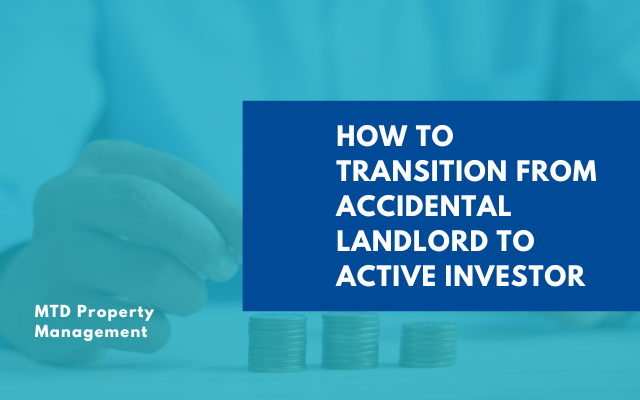Pros and Cons of Renting to Tenants with Pets in Chicago
If you own a rental property, perhaps one of the most important decisions that you need to make is whether or not to make your rental home pet-friendly for your tenants. More than 60% of U.S. households own pets. These pet owners who are looking for a home to rent also need that same place for their pets to live in.
However, choosing to allow pets in your rental home can greatly affect your overall profitability. Before you decide to open your rental property to tenants who have pets, it’s essential to know all the benefits and risks associated with it.
You also need to consider whether you can generate more profits from making your property pet-friendly, or whether this can cause damage to your property. Plus, take into account how many tenants will be interested in occupying your property and how much you can charge them for rent if they have pets.
Benefits of a Pet-Friendly Rental Home
Statistics show that only around 55% of landlords allow pets. This is a challenge that many potential tenants who have pets are currently facing. Most landlords prefer not to allow pets into their rental properties. However, as a rental property owner, there are a lot of benefits from renting out your property to pet owners, which we will discuss below.
You Can Increase Your Target Market
If you open your rental property to pet owners, you will essentially increase your
target market, and more tenants will be interested in your rental home. In fact, you can access around 60% more potential tenants who are looking for a pet-friendly rental home.

If you decide to accept tenants with pets, you will gain more prospects. After all, since there are only a few landlords who open their properties to pet owners, you’ll have less competition. You will increase your options, and you’ll be able to choose more qualified tenants from a pool of interested renters.
You’ll Have an Opportunity to Charge Other Fees
Another benefit of being a pet-friendly rental property owner is being able to charge additional fees. You will have an opportunity to increase your income because of these extra fees, such as pet rent and pet deposit. You can also charge other non-refundable fees associated with the risk of having pets in your home.
Since most pet owners are more than willing to spend on pet expenses, they can afford to pay additional charges for having a pet.
As a landlord, you can take advantage of this extra income by accepting pets to your rental home. Just make sure to charge fees that are in compliance with Chicago’s landlord-tenant laws. Plus, ensure to include these fees in writing in your lease agreement.
You Can Charge a Higher Rental Rate
Aside from additional fees, allowing pets into your home can also be a good reason to assign a higher rent price. There are a lot of risks involved in permitting tenants with pets, so charging a higher rental rate to pet owners is reasonable. Besides, most pet owners already expect to pay a higher rate for bringing pets to the rental property.

Some landlords can earn as much as 5% to 10% more rental income simply by accepting pets. However, similar to the other additional charges, it’s crucial to ensure that you are in compliance with the local and state rental laws before increasing your rental rates.
You Can Find Responsible Tenants
Owning a pet (or pets) is not an easy task. In fact, it is a serious, long-term commitment. So, you can expect that tenants with pets are usually
responsible renters. Tenants who take care of their pets are also likely to take good care of your property.
Most tenants with pets are even more responsible and more qualified than those who do not own pets. Landlords who are used to welcoming pet owners know that they can trust these tenants to perform their duties and adhere to the terms indicated in the lease agreement.
Pet Owners Tend to Stay Longer
If you want to score long-term renters, pet owners are your most probable prospects. Due to the difficulty in finding pet-friendly rental homes, many tenants with pets would prefer to settle in a rental property that welcomes their companions. You can expect pet owners to stick around in one rental home for a longer period than those tenants without pets.
This means that your property will continue to stay occupied for a longer term. Having a
vacant rental property poses a lot of risks. With long-term tenants, your cash flow will remain positive, and you won’t have to go through the hassle of marketing your property and finding new tenants again after the lease.
Risks Involved in Renting Your Home to Pet Owners
While you can enjoy many benefits from allowing pets into your rental home, there are several risks that you also need to be aware of, including:
- Property damage
- Noise from pets
- Pet odors
- Neighbor complaints
- Possible pet-related injuries
To prevent these risks, it’s important to conduct effective
pet screening and
screen your tenants properly and only accept those who are responsible enough to take accountability for their pets.

Also, include all restrictions, additional fees, and pet policy in your lease while abiding by the Tenant-Landlord and Fair Housing Laws. In addition, make sure to review your insurance coverage to ensure that your property is fully covered.
The Bottom Line: Should You Allow Pets Into Your Rental Home?
Welcoming pets into your rental home comes with both advantages and drawbacks. You need to weigh both before making a decision. Should you decide to become a pet-friendly rental, you have to take all the necessary precautions to protect your interest.
If you are unsure, it’s best to take to the experts in property management to help you make a decision.
MTD Property Management is here to help you with all your property management needs.









